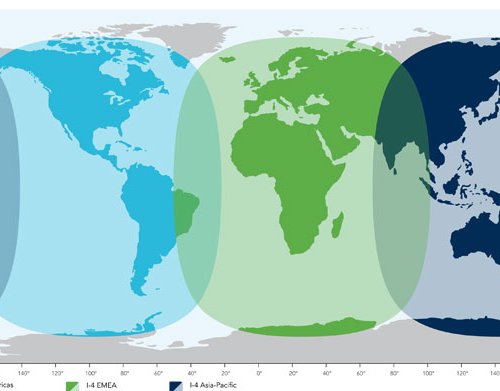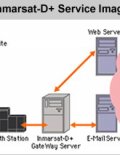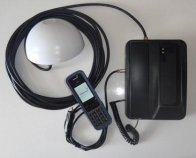Details
IsatPhone PRO Frequently Asked Questions
General
What is my phone number?
The phone number can be found on your Identification Card. If you have lost your card, please call Pacific Rim on +61862623684 and we will be able to advise you of your phone number.
What are my call rates?
Call rates can differ between different services and plans. Please contact the Airtime Department of Pacific Rim for a rate schedule of your specific service.
Why is it so expensive for landlines to call my satellite phone?
It can be quite expensive to call satellite phones using a landline services as local carriers charge international rates (or higher!). Pacific Rim offers a cheap option called Two-Stage Dialling for Iridium SIM Cards, which allows you to dial satellite phones via a local number. Please contact our Airtime department on for more information regarding Two-Stage Dialling and the benefits it can offer.
My phone is asking for a PUK code
“PUK” stands for “PIN Unlock Key”. This usually occurs when you have entered an incorrect phone PIN three times. Please call Pacific Rim to obtain your PUK code.
*Check that you have administrator rights to receive this code
My terminal has stopped working or I can’t connect
Please call Helen from our Airtime department to ensure your service is still currently active. You will need to have on hand one of the following:
SIM Card Number
Customer Code
Customer Name
Invoice Number
If the results show that it is activated then it could be a hardware or other technical issue and we will put you through to our 24/7 Help Desk.
My terminal has stopped working or I can’t connect
Please call the Pacific Rim to ensure your service is still currently active. You will need to have on hand one of the following:
SIM Card Number
Customer Code
Customer Name
Invoice Number
If the results show that your SIM is active then it could be a hardware or technical issue and we will put you through to our 24/7 Help Desk.
IsatPhone Pro General Questions
How do I obtain a GPS Signal so that I can start to use the IsatPhone Pro?
To make calls and when receiving calls from your IsatPhone Pro, the satellite phone must be outside, turned on and the antenna properly deployed, unless it’s in a dock with an external antenna.
Before using the IsatPhone Pro in a new location you will need to obtain a GPS signal so that it knows your location. The phone must initially be held in an upright position for a GPS signal lock, which can take a few minutes – up to 10 minutes for first use. Once a GPS signal is found and the communication link to the satellite has been made “Ready for service” will be displayed on the screen.
How do I make a call from my IsatPhone Pro?
To make a call from your IsatPhone Pro dial:
00 + Country Code + Area Code (remove any leading “0”) + Telephone Number
For example, for Pacific Rim Help Desk Australian number of 08 6262 3684, dial 00 61 8 6262 3684 (or +61 8 6262 3684). For a mobile number of 0411 222 333, dial 00 61 411 222 333 (or +61 411 222 333).
How do people call my IsatPhone Pro?
To make calls to your IsatPhone Pro dial:
International Dialing Code + IsatPhone Pro Phone Number
For voice calls from anywhere in Australia to your IsatPhone Pro dial 0011 + (IsatPhone Pro Phone Number). The 870 is a unique IsatPhone Pro “country code” that is always the same regardless of your location. The calling party pays for calls routed to your IsatPhone Pro.
TIP: Your IsatPhone Pro works well through the Bluetooth ear piece or on speaker phone, to allow the antenna to remain in optimum position. IsatPhone Pro docks will extend your IsatPhone Pro capabilities whether you’re in a car, boat or remote office (see the Docks page for more information).
I am not receiving calls
If your antenna is not deployed and pointed in an upright position in a location where the handset has clear sky view of the satellite, you will not be able to receive calls. It is important that while the phone is in use, the antenna remains in an upright to ensure a signal is always received when making and receiving calls.
If your IsatPhone Pro is not on when someone has tried to call you, a SMS will be received and displayed when you next switch your IsatPhone Pro on.
How do I test my IsatPhone Pro to make sure it’s working?
To test your IsatPhone Pro dial 00 870 776 999 999 (or +870 776 999 999). This is a free call.
This number will enable you to test your phone for connectivity and faults: if your call is successful you will hear a recorded message informing you of this.
Sending a Free Text Message to your IsatPhone Pro
You can send a free text message to your IsatPhone Pro from one of the following web site:
www.isatphonelive.com

Click on the icon that says “Send a free text message to an IsatPhone Pro”.
Type in the IsatPhone Pro Voice number or email address.
Insert text up to 160 characters
Press Send
How do I activate my Voice Mail service?
Activating your Voicemail service is a free service provided by Inmarsat. To set up your voice mail:
Press the square centre menu button above the numeric keypad.
Go to Contacts
Select Voice Mail Number
Select Number > options > call
A voice mail service will ask you for what language you wish to have the Voice mail in.
Voice mail service will ask you to enter a 4 digit pin code then the # key. Select and enter a code you will remember.
Voice mail service will ask if you wish to record a greeting. Select 1 for a greeting.
Once your greeting is confirmed, your voicemail is setup and ready to use.
How do I access Voice Mail?
The voicemail icon will be shown on the display screen and in the Info menu if you have new voice messages. To listen to messages, hold down the 1 key. You may also dial the short code 570 followed by the green call key.
How do I send my GPS location to someone to let them know where I am?
First, make sure the GPS fix you are going to send is current. From the Menu, select GPS Position > Options > Send GPS location > Send > Text Message or Email Message and enter the recipient’s address information in the “To” field. Press Send.
Can I dial 1300 numbers from my IsatPhone Pro?
The IsatPhone is a global satellite phone that uses the international Inmarsat prefix of 870. As this is an international number, it will NOT allow you to place calls to 000, 112, 6 digit, 1300 or 1800 numbers.
IsatPhone Pro Prepaid
How do I check my Prepaid Balance on my IsatPhone Pro?
To check your balance on your prepaid SIM Card from the main calling screen enter the balance enquiry code (*106#) and press the green call key. Your current balance and expiry date of that call credit will be shown on the screen.
You can also get your balance via the phone menu:
Select Menu
Select Setting
Select “Prepay
Select Balance Enquiry
Your current balance and expiry date will be shown on the screen.
How do I redeem a Prepaid Voucher which has been sent to me?
From the main screen enter the top-up code:
*101* Voucher Number # (example *101*1234567890123456#
and then press the green key.
Your new balance will be shown on the screen.
Once your IsatPhone has been recharged prior to the 31st December 2012, you have 2 years to use the prepaid units as long as the Recharge Voucher was purchased prior to the 1st June 2012.
How do I purchase extra Prepaid Units for my phone?
To purchase Pre-Paid Units you can do one of the following,
Email Pacific Rim at sales@pacificrim.com.au
Phone Pacific Rim Airtime Department on +61 (0)8 6262 3684
Once we receive your request, we will send you a prepaid voucher via email or text. When you need to increase your prepay credit simply enter the activation code into your phone following the instructions above.
Please note, if you run out of credit, you will not be able to make a call from your IsatPhone Pro Prepaid SIM card.
Can I use my Prepaid IsatPhone Pro SIM card in the USA?
Due to a Patent legal Issue in the United States, you will be unable to use an IsatPhone Pro with a SIM on a pre-paid account whilst in the US. Pacific Rim advises that if you are planning to take your IsatPhone to the USA you contact us to arrange for a post-paid SIM card to cover your calls for the period of time you will be traveling there.
Emergency Contact Numbers
The IsatPhone is a global satellite phone that uses the international Inmarsat prefix of 870. As this is an International number it does not allow calls to 000, 112, 6 digit, 1300 or 1800 numbers. The phone is programmed to accept 911 calls in the USA due to legal requirements there. Note that this is not an Australian problem; emergency phone numbers do not work anywhere other than in the USA.
Whilst this has always been the situation with initial releases of international satellite phones, as the affordability of these phones has seen them accessed by a far wider pool of users, the issue has become more significant.
We recognize that this is a concern to travelers who wish to use the handset in emergency situations and Pacific Rim is working with both Inmarsat and local Australian authorities to find a solution.
In the meantime we suggest that our clients pre-program their IsatPhone address book with local emergency numbers in the phone for peace of mind. We have provided a list of Australian services that may prove useful.
We understand that this list is not exhaustive. If you have located other numbers that you feel should be added to the database please send details to sales@pacificrim.com.au and we will post them to the website for all IsatPhone users to access.
Rural Fire Service
NSW Rural Fire Service (HQ)
+61 2 8741 5555
VIC Rural Fire Service (HQ)
+61 3 9262 8444
SA Rural Fire Service (HQ)
+61 8 8463 4200
WA Rural Fire Service (Albany)
+61 8 9841 2122
WA Rural Fire Service (Bunbury)
+61 8 9721 4644
WA Rural Fire Service (Geraldton)
+61 8 9921 2222
WA Rural Fire Service (Kalgoorlie)
+61 8 9021 1044
Royal Flying Doctor Service
Central Operations: SA & NT
+61 8 8238 3333
NSW
+61 2 8259 8100
South East NSW
+61 8 8080 3737
QLD
+61 7 3860 1100
WA
+61 8 9417 6300
National Parks and Wildlife
NSW
+61 2 9995 5550
VIC
+61 3 8627 4699
SA
+61 8 8336 0926
WA – Marine Emergencies
+61 8 9483 6462
WA- Fire Calls
+61 8 9219 8000
Road Side Assistance
NRMA (NSW, ACT, QLD & TAS)
+61 2 9848 5201
RAC WA (Kalgoorlie)
+61 8 9051 5680
RAC WA (Geraldton)
+61 8 9950 0580
RAA SA (General Enquiries)
+61 8 8202 4600
AANT (General Enquiries)
+61 8 8925 5901
INMARSAT SATELLITE – I-4s lead the fleet
The Inmarsat-4 (I-4) series of satellites are the most advanced commercial mobile communications spacecraft of their kind.
The three satellites that make up the global I-4 constellation are part of an 11-strong fleet of spacecraft owned and operated by Inmarsat.
All the Inmarsat satellites, including the Inmarsat-2 and Inmarsat-3 generations, fly in geosynchronous orbit 35,786km (22,240 statute miles) above the Earth.
Spot Beams
Inmarsat’s first wholly owned satellites, the Inmarsat-2s, were launched in the early 1990s, and the Inmarsat-3s – the first generation to use spot beam technology – followed later in the decade.
The I-4s set a new benchmark for mobile satellite communications in terms of their power, capacity and flexibility when they first went into orbit in 2005. One I-4 satellite is 60 times more powerful than an Inmarsat-3.
The I-4 series is expected to continue in commercial operation until about 2020.
Alphasat
In the meantime, Inmarsat has entered into agreement with the European Space Agency (ESA) to become the commercial operator of a new satellite called Alphasat.
The satellite is part of an ESA initiative to develop a new spacecraft platform capable of carrying a large communications payload.
Alphasat is scheduled for completion in 2012 and will supplement the existing I-4 satellites.
It will provide service over Europe, the Middle East and Africa.
Coverage
To reflect the geographic locations covered by the satellites, Inmarsat refers to its three I-4 satellite regions as:
I-4 Americas
I-4 EMEA (Europe, Middle East, Africa)
I-4 Asia-Pacific
The respective positions of each I-4 satellite are 98W (I-4 Americas), 25E (I-4 EMEA) and 143.5E (I-4 Asia-Pacific).
HOW THE INMARSAT SYSTEM WORKS
The Latest Inmarsat I-4 Satellite System: Gateway to Broadband BGAN, GAN and Fleet and Mini M Coverage Map * Are among the largest commercial communications satellites ever launched. * Replacing their highly successful predecessors – the Inmarsat-2 and Inmarsat-3 spacecraft * Together they have the ability to deliver simultaneous voice and data at speeds of about half a megabit per second. * Each I-4 is a veritable powerhouse compared with the Inmarsat-3 spacecraft, offering: o Greater call capacity than all five I-3s put together o 60 times more power than any one of its predecessors o 12 times greater efficiency in its use of radio spectrum o 16 times the capacity o 25 times the receiver sensitivity. o A single global beam that covers up to one-third of the Earth’s surface, apart from the poles. o 19 wide spot beams that provide continuous coverage across the same region for Inmarsat’s existing high-end services, including Fleet F77, Fleet F55 and F33, and maritime mini-M. o An additional 228 narrow spot beams, designed to form the backbone of Inmarsat’s broadband services * Together the I-4 beams will service about 85 per cent of the world’s landmass, covering approximately 98 per cent of the global population. Orbital Operations and Call Flow * The Inmarsat satellites are positioned in geostationary orbit. This means they follow a circular orbit in the plane of the Equator at a height of 35,600km, so they appear stationary relative to a point on the Earth’s surface. * The satellites are controlled from the Satellite Control Centre (SCC) at Inmarsat HQ in London, which is responsible for keeping the satellites in position and for ensuring the onboard systems are fully functional at all times. * Data on the status of the Inmarsat satellites is supplied to the SCC by four tracking, telemetry and control (TT&C) stations located at Fucino, Italy; Beijing in China; Lake Cowichan, western Canada; and Pennant Point, eastern Canada. There are also back-up stations at Eik in Norway and Aukland, New Zealand. * A call from an Inmarsat mobile terminal goes directly to the satellite overhead, which routes it back down to an LES. From there the call passes into the public phone network for connection to home, office or cell. * The flow of communications traffic through the Inmarsat network is monitored and managed by the Network Operations Centre (NOC) at Inmarsat HQ. * The NOC is supported by network co-ordination stations (NCS). Their primary role is to help set up each call by assigning a channel to the mobile terminal and the appropriate LES. There is one NCS for each ocean region and for each Inmarsat system (Inmarsat A, B, C, etc). Each NCS communicates with all the land earth station operators in its ocean region, the other NCSs and the NOC, making it possible to distribute operational information throughout the system * With the launch of BGAN, two new gateways, called Satellite Access Stations (SASs), are being introduced. Both are owned by Inmarsat. The first, in Burum, The Netherlands, will be operated by Inmarsat partner Xantic, and the other, in Fucino, Italy, by another partner, Telespazio.






